Class Reptilia
Order Squamata
Suborder Sauria
Family Phrynosomatidae
Callisaurus draconoides—Zebratail Lizard // Cophosaurus texanus—Greater Earless Lizard // Holbrookia maculata—Lesser Earless Lizard // Phrynosoma—Horned Lizards // Sceloporus—Spiny Lizards // Urosaurus ornatus—Tree Lizard // Uta stansburiana—Side-blotched Lizard
Synonyms. Iguanidae. The Iguanidae has been split into a number of families in recent years, of which the Phrynosomatidae is one of the larger.
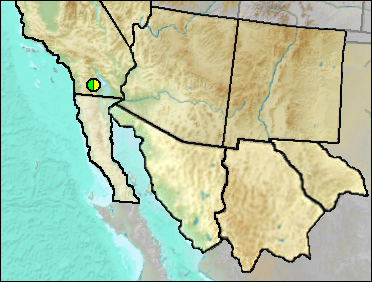
Sites.
Late Blancan/Irvingtonian: Vallecito Creek, Anza-Borrego Desert (Cassiliano 1999).
Literature. Cassiliano 1999.
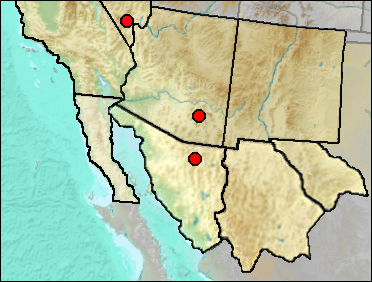
This is an inhabitant of the western portion of our region, with its eastern boundary barely entering into extreme southwestern New Mexico. It generally occurs in rather open desertscrub habitats (Mead et al. 1984).
Sites.
Rancholabrean: Centennial Parkway, Las Vegas Valley (Jefferson et al. 2015); Tule Springs (Springer et al. 2005: cf.).
Sangamon: La Brisca (Van Devender et al. 1985: cf. gen. et sp.).
Late Wisconsin/Holocene: Deadman Cave (Mead et al. 1984).
Literature. Jefferson et al. 2015; Mead et al. 1984; Springer et al. 2005; Van Devender et al. 1985.
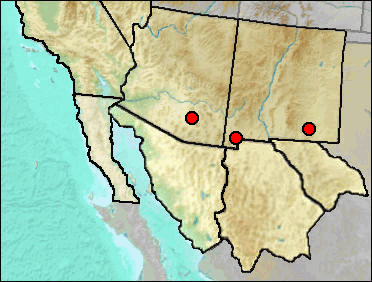
This lizard currently occupies southern and, at lower elevations, central New Mexico. Van Devender and Worthington (1977) described it as occupying rocky habitats in desertscrub and in grasslands at relatively low elevations. This being the case, it seems likely that the Wisconsin/Holocene records are of Holocene age.
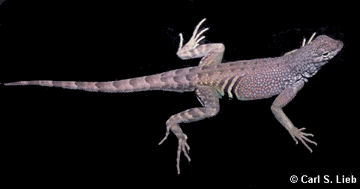 The Dry Cave (Lost Valley)
identification is highly suspect.
The Dry Cave (Lost Valley)
identification is highly suspect.
Fig. 1. Cophosaurus texanus. Photograph by Carl S. Lieb.
Sites.
Early/Early-Mid Wisconsin: Lost Valley (? gen. et sp.) (Harris 1993c).
Late Wisconsin/Holocene: Deadman Cave (Mead et al. 1984); Howell's Ridge Cave (Van Devender and Worthington 1977).
Literature. Harris 1993c; Mead et al. 1984; Van Devender and Worthington 1977.
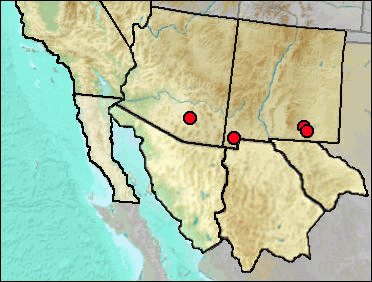
This lizard is widespread in Mexico, Arizona, New Mexico, and the Great Plains north to South Dakota. According to Van Devender and Worthington (1977:93), this "is a grassland and woodland species that may occasionally occur in desert areas."
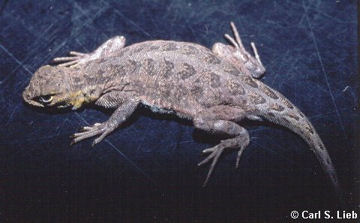 Applegarth (1979)
suggested that level, sandy, open areas were favored. He also noted that presence in
the older "F" grid of Animal Fair and absence at the full glacial
"A" end of the excavation area probably meant absence from the Dry Cave area
during the colder parts of the Wisconsin; however, he went on to note that occurrence
in other sites in the area that were generally indicative of warmer conditions
suggested that the upper elevational limits were near Eddy County during the Wisconsin,
while today Eddy County is near the lower elevational limits.
Applegarth (1979)
suggested that level, sandy, open areas were favored. He also noted that presence in
the older "F" grid of Animal Fair and absence at the full glacial
"A" end of the excavation area probably meant absence from the Dry Cave area
during the colder parts of the Wisconsin; however, he went on to note that occurrence
in other sites in the area that were generally indicative of warmer conditions
suggested that the upper elevational limits were near Eddy County during the Wisconsin,
while today Eddy County is near the lower elevational limits.
Fig. 1. Holbrookia maculata. Photograph courtesy of Carl S. Lieb.
Sites.
Mid/Late Wisconsin: Animal Fair, F2 L5 (Applegarth 1979); Dark Canyon Cave (Applegarth 1979).
Late Wisconsin/Holocene: Deadman Cave (Mead et al. 1984); Howell's Ridge Cave (Van Devender and Worthington 1977).
Literature. Applegarth 1979; Mead et al. 1984; Van Devender and Worthington 1977.
Last Update: 17 May 2014